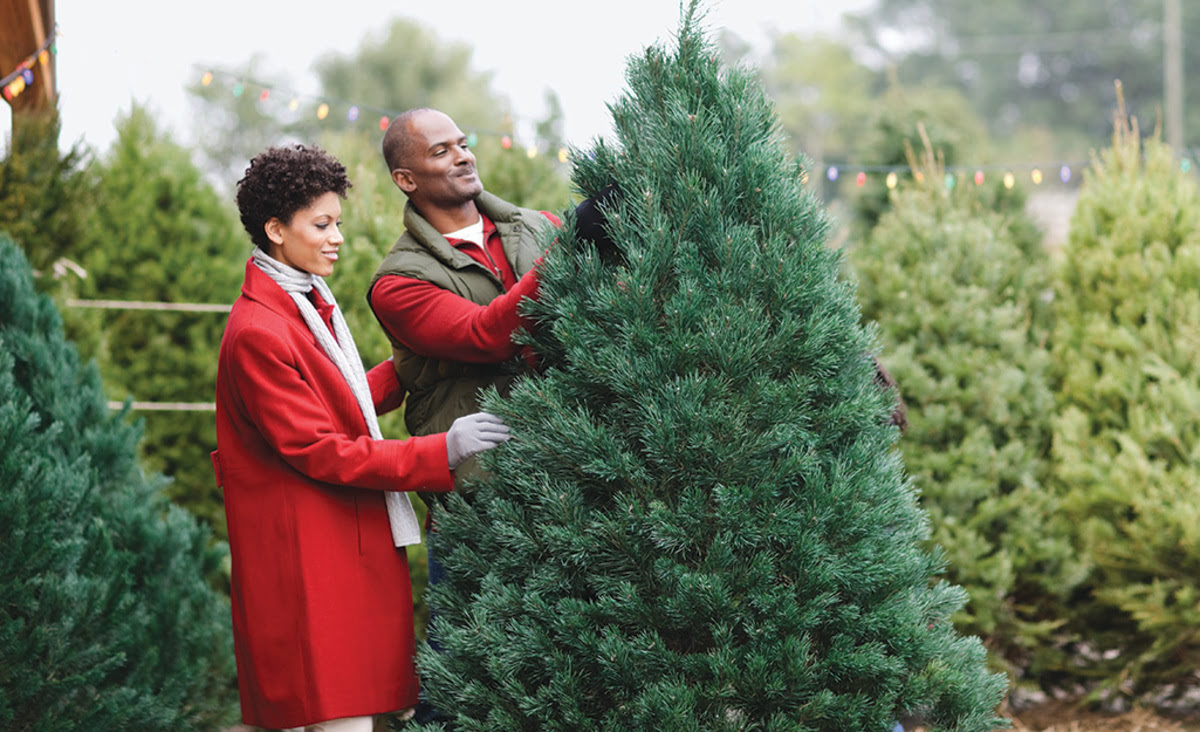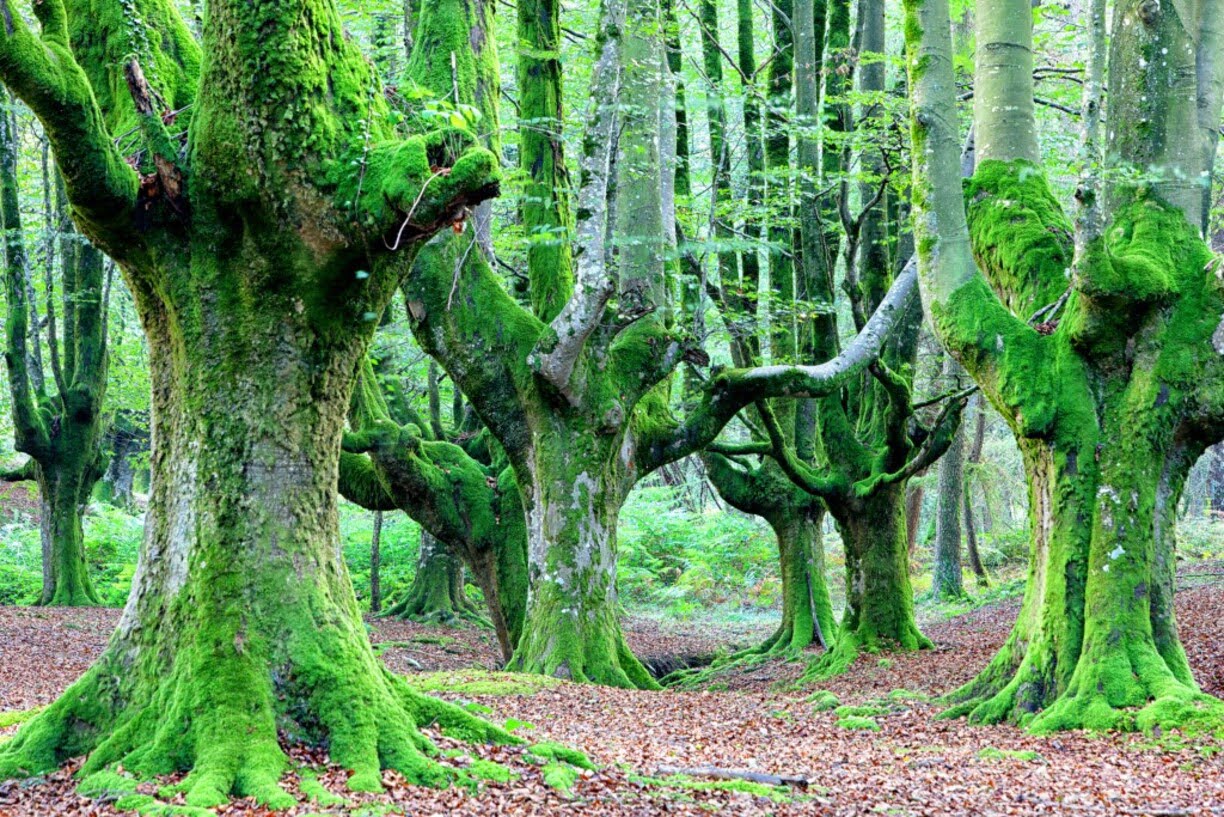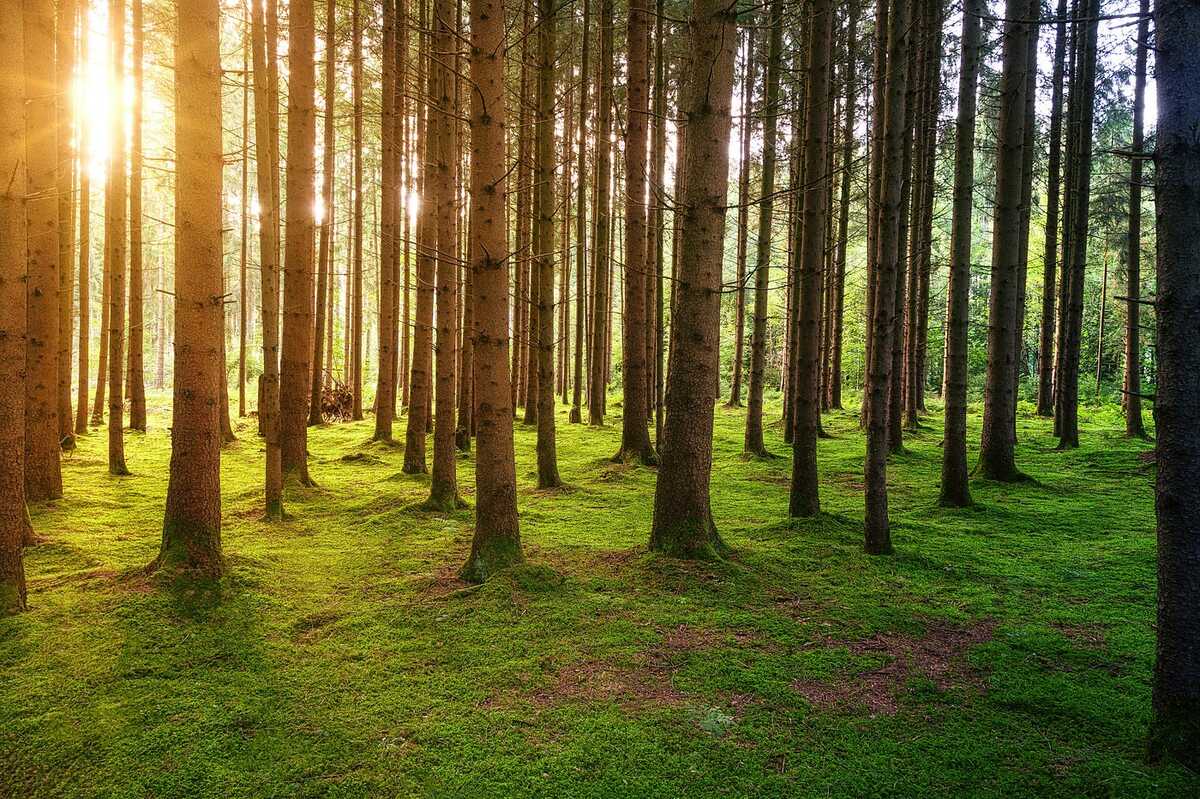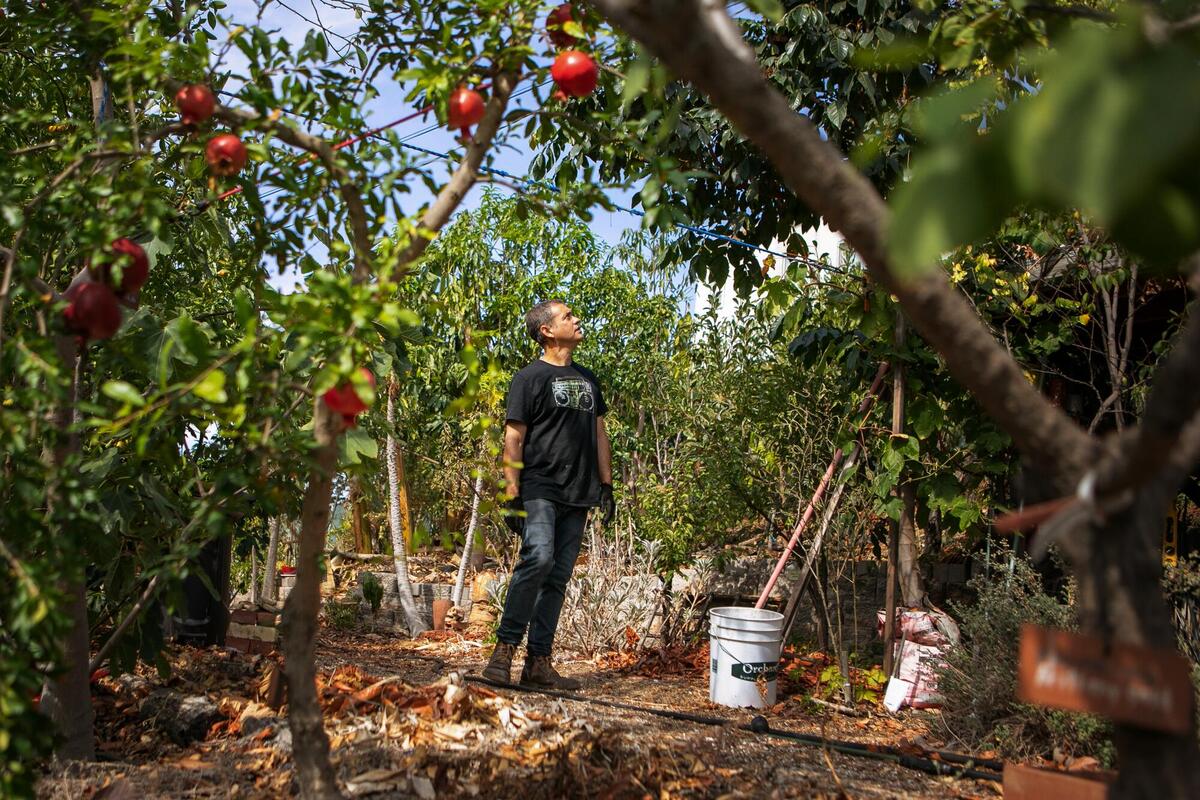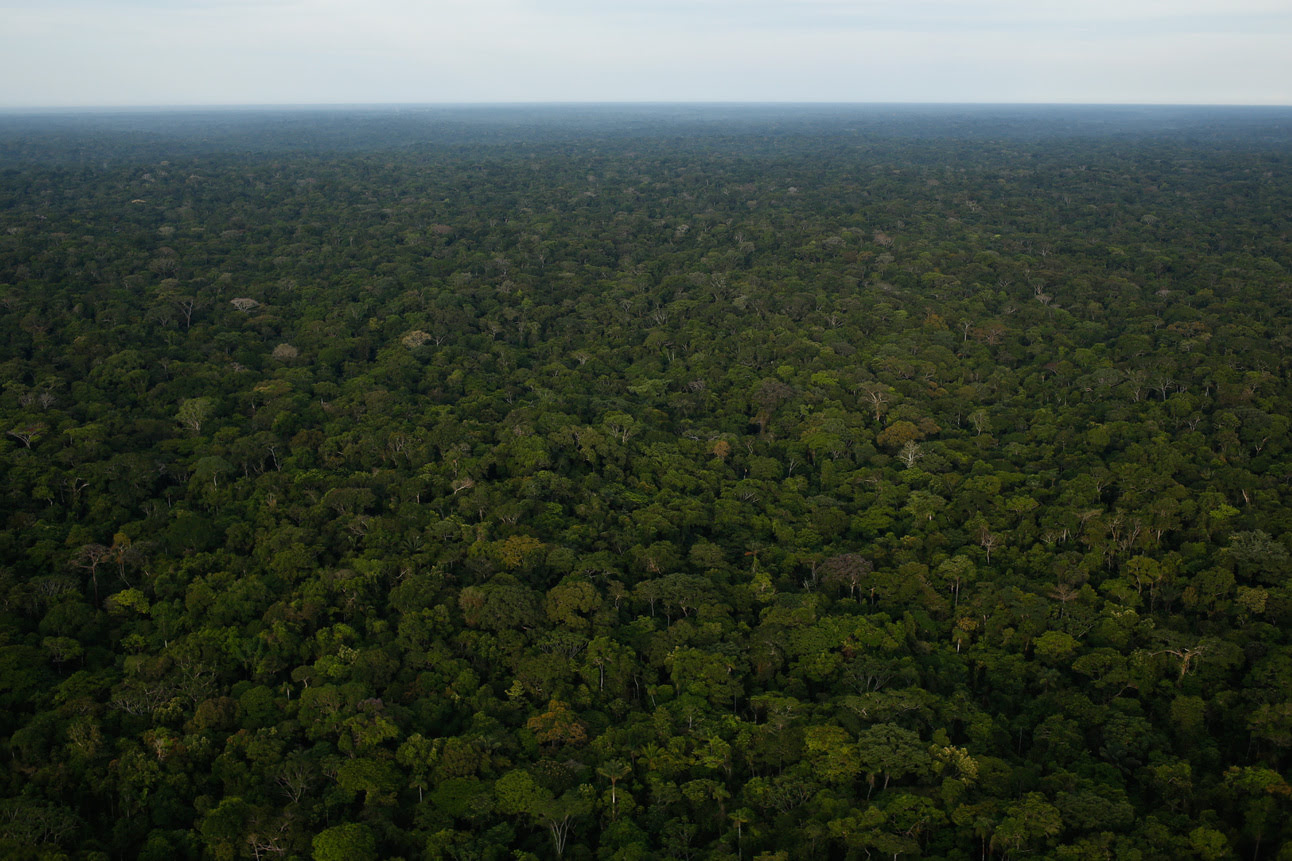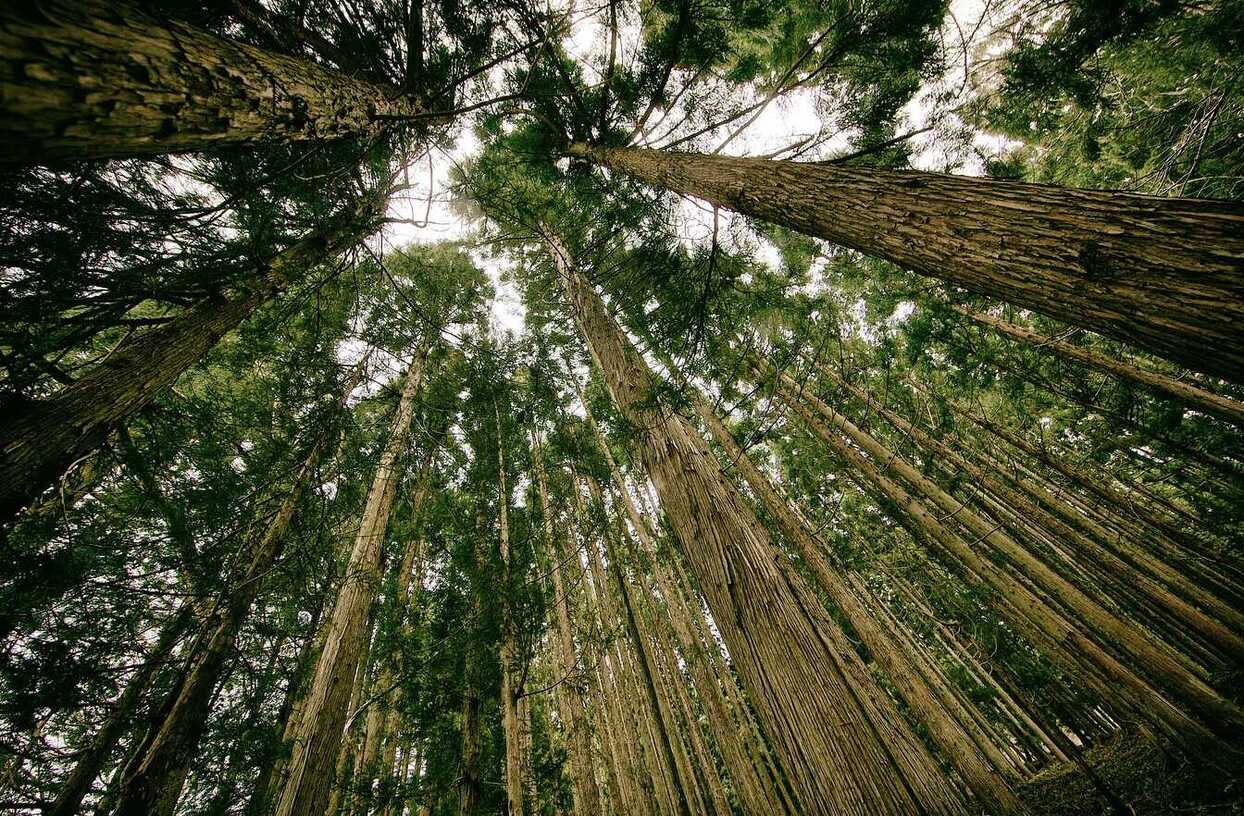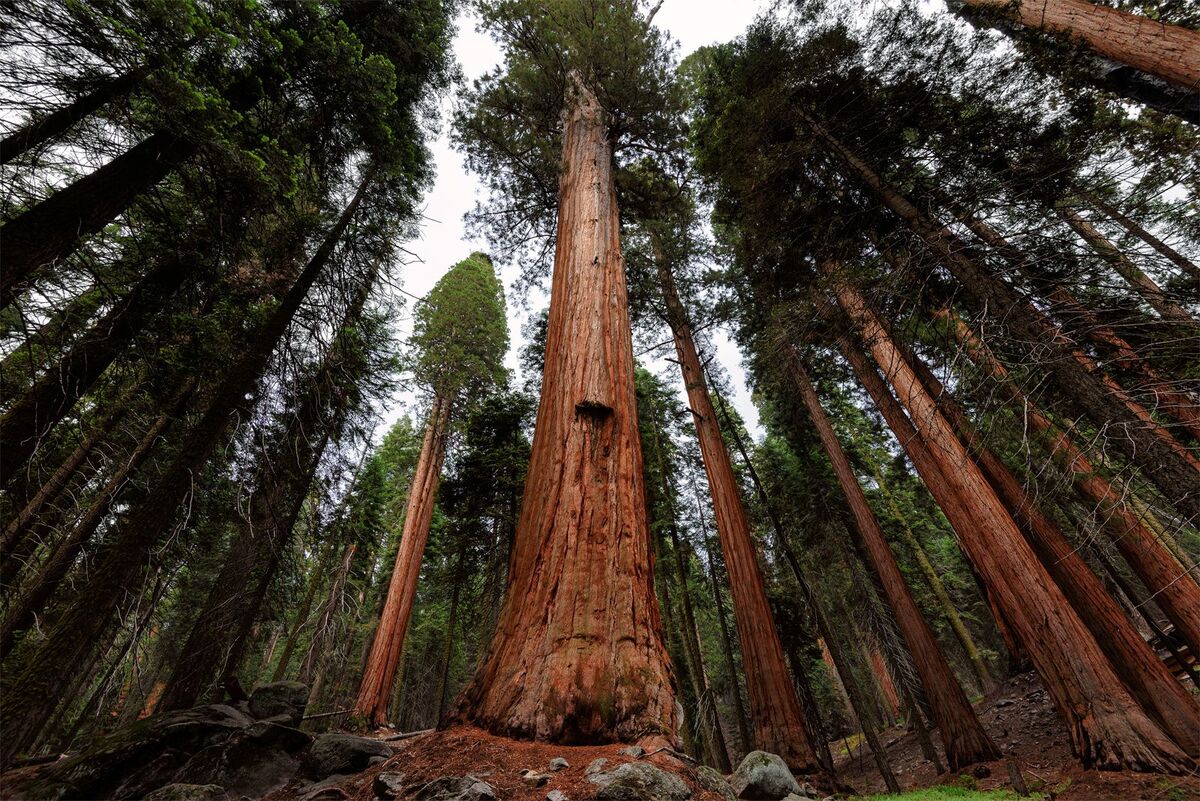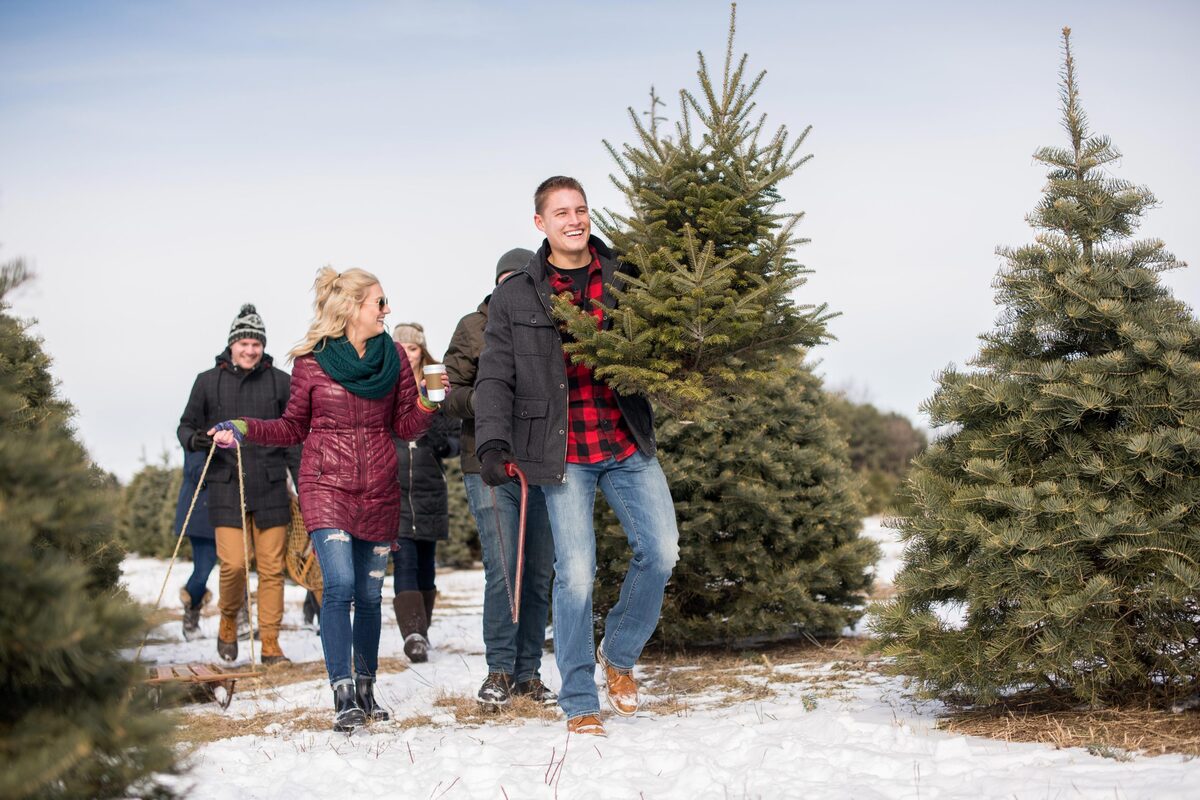Home>Gardening News and Trends>Latest News>How Many Real Christmas Trees Are Sold Each Year


Latest News
How Many Real Christmas Trees Are Sold Each Year
Modified: January 22, 2024
Discover the latest news on how many real Christmas trees are sold each year. Find out the statistics and trends surrounding the sale of live Christmas trees.
(Many of the links in this article redirect to a specific reviewed product. Your purchase of these products through affiliate links helps to generate commission for Chicagolandgardening.com, at no extra cost. Learn more)
Table of Contents
Introduction
When the holiday season arrives, one of the most cherished traditions for many families around the world is decorating a Christmas tree. The aroma of pine fills the air, twinkling lights cast a warm glow, and ornaments representing memories and traditions adorn the branches. But have you ever wondered how many real Christmas trees are sold each year?
Real Christmas trees, as opposed to artificial ones, are a natural and timeless choice for many households. They not only add beauty and a festive atmosphere to homes, but they also have a rich history dating back centuries. From humble beginnings to becoming a beloved icon of the holiday season, real Christmas trees have a special place in our hearts.
There are several popular types of real Christmas trees to choose from, including the Fraser Fir, Douglas Fir, Balsam Fir, and Scotch Pine, each with its own unique characteristics. These living symbols of the holiday season bring joy and happiness to countless homes each year.
Aside from their aesthetic appeal, real Christmas trees also offer a range of benefits. They are biodegradable, renewable resources that can be recycled into mulch or used for other purposes after the holiday season. Additionally, the act of selecting and decorating a real Christmas tree creates lasting memories and brings families together.
Christmas tree sales statistics reveal the staggering number of real trees that are sold and enjoyed each year. The popularity of real trees fluctuates, influenced by various factors such as economic conditions and consumer preferences. However, the demand for real Christmas trees remains strong.
In this article, we will explore the history of real Christmas trees, discuss popular types of trees, examine the benefits of choosing real trees, delve into Christmas tree sales statistics, and examine factors that influence sales. We will also take a look at where these trees are sold and discuss the environmental impact of real Christmas trees. So, let’s delve into the magical world of real Christmas trees and discover the enchantment they bring to our homes during the holiday season.
History of Real Christmas Trees
The tradition of decorating trees during the winter season dates back centuries, with roots in ancient pagan rituals. The use of evergreen trees as symbols of life and rebirth was common in many cultures, including the ancient Egyptians, Romans, and Vikings. These early civilizations would bring evergreen branches into their homes during the winter solstice to signify the return of life and the coming of spring.
The modern tradition of the Christmas tree can be traced back to Germany in the 16th century. Christians in Germany began bringing evergreen trees indoors and decorating them with candles, fruits, and nuts to celebrate the birth of Jesus Christ. These early Christmas trees were often adorned with symbols of faith and held a religious significance.
The tradition quickly spread throughout Europe, becoming particularly popular among the nobility and upper classes. It wasn’t until the 19th century that the Christmas tree tradition made its way to North America. German settlers brought the custom to the United States, where it quickly gained popularity and evolved into the cherished tradition we know today.
In the early days of the tradition, families would venture into the woods to chop down their own trees. But as the popularity of Christmas trees grew, so did the demand for commercially cultivated trees. Tree farms began to spring up, dedicated to the cultivation of Christmas trees, ensuring a steady supply for eager households.
Over the years, the tradition of decorating a real Christmas tree has remained strong, despite the rise of artificial trees. The allure of a real tree, with its fragrant scent and natural beauty, continues to captivate people around the world. Today, millions of families make the annual pilgrimage to choose their perfect tree, creating cherished memories that last a lifetime.
Popular Types of Real Christmas Trees
When it comes to choosing a real Christmas tree, there are several popular types that have become favorites among families. Each type has its own unique characteristics, ranging from the appearance of the needles to the strength of the branches. Here are some of the most common types of real Christmas trees:
- Frasier Fir: Known for its lush foliage and strong branches, the Frasier Fir is a popular choice for many households. It has a pleasing evergreen scent and retains its needles well.
- Douglas Fir: The Douglas Fir is another popular variety, adored for its full, bushy appearance and soft needles. It has a lovely pine fragrance that fills the room.
- Balsam Fir: With its classic pyramid shape and dark green needles, the Balsam Fir is a favorite among those who prefer a traditional-looking Christmas tree. It has a pleasant fragrance that adds to the festive ambiance.
- Scotch Pine: Recognized for its sturdy branches and excellent needle retention, the Scotch Pine is a popular choice for families with heavy ornaments or those looking for a tree that will last throughout the holiday season.
Each type of tree has its own unique characteristics, including needle length, color, and fragrance. Choosing the perfect tree comes down to personal preference and the desired look for your holiday decorations.
It’s important to note that while real Christmas trees offer a beautiful and authentic holiday experience, they do require some maintenance. Proper care, such as watering the tree regularly and keeping it away from direct heat sources, will help ensure that it stays fresh and lasts throughout the season.
Whether you prefer the soft needles of a Douglas Fir, the sturdy branches of a Scotch Pine, or the classic shape of a Balsam Fir, the choice of a real Christmas tree adds a touch of nature’s beauty to your holiday celebrations.
Benefits of Choosing Real Christmas Trees
When it comes to decorating for the holiday season, many families face the age-old choice between a real Christmas tree or an artificial one. While both options have their merits, there are numerous benefits to choosing a real Christmas tree. Here are some of the advantages:
- Authentic Beauty: A real Christmas tree brings the authentic beauty of nature into your home. The lush green branches, the delightful fragrance, and the unique variations in each tree create a warm and inviting atmosphere.
- Environmental Sustainability: Real Christmas trees are a renewable resource. For every tree harvested, at least one new tree is planted, ensuring a constant supply for future generations. Additionally, real trees can be recycled into mulch or used for other purposes after the holiday season.
- Supporting Local Economies: Choosing a real Christmas tree supports local farmers and tree nurseries. Many tree farms are family-owned businesses that rely on Christmas tree sales as a significant source of income.
- Creating Memories: Selecting and decorating a real Christmas tree is a cherished annual tradition for many families. It provides an opportunity to create lasting memories and bring loved ones together during the holiday season.
- Reduced Risk of Fire: Real Christmas trees have a natural moisture content that makes them less flammable than artificial trees. Proper care and watering further reduce the risk of fire, making them a safe option for your home.
- Customizable Size and Shape: Unlike artificial trees that come in predetermined sizes and shapes, real Christmas trees offer more flexibility. You can choose a tree that fits perfectly in your space and trim it to your desired shape.
It’s worth noting that real Christmas trees do require a certain level of maintenance, such as watering and regular care. However, the benefits they provide far outweigh the additional effort.
While artificial trees may have their convenience, there’s something truly special about the tradition and beauty of a real Christmas tree. So, if you’re looking to add a touch of authenticity and natural elegance to your holiday celebrations, a real tree may be the perfect choice for you.
Christmas Tree Sales Statistics
Every year, the sale of real Christmas trees contributes to the holiday spirit and generates significant revenue for the industry. Here are some fascinating statistics related to Christmas tree sales:
- Number of Trees Sold: The number of real Christmas trees sold each year reaches into the millions. According to the National Christmas Tree Association, an estimated 25-30 million real trees are sold annually in the United States alone.
- Annual Revenue: Christmas tree sales generate billions of dollars in revenue. In the United States, the industry is valued at around $2 billion each year, with additional earnings from tree exports.
- Top Producing States: Oregon, North Carolina, Michigan, Pennsylvania, and Wisconsin are among the top-producing states when it comes to Christmas tree cultivation. These regions benefit from favorable climates and suitable soil conditions for tree growth.
- Tree Price Range: The cost of real Christmas trees varies depending on factors such as tree type, size, and location. Prices can range from as low as $20 for a small tree to over $100 for a larger, more premium tree.
- Online Sales: While most real Christmas trees are still purchased in physical retail locations, online tree sales have been growing in recent years. Many tree farms now offer the convenience of online ordering and delivery straight to the customer’s doorstep.
- Competition from Artificial Trees: While real Christmas trees remain a popular choice, artificial trees have gained market share over the years. Factors such as convenience, affordability, and reusability contribute to the appeal of artificial trees for some consumers.
It’s important to note that the demand for real Christmas trees can fluctuate from year to year due to various factors, including economic conditions and consumer preferences. However, the enduring popularity of real trees and the joy they bring to homes during the holiday season ensure that Christmas tree sales continue to thrive.
As families eagerly search for the perfect tree to adorn their homes, the Christmas tree industry plays a crucial role in creating festive memories and spreading holiday cheer.
Factors Influencing Christmas Tree Sales
The sale of Christmas trees is influenced by various factors that can impact consumer demand and the overall success of the industry. Here are some key factors that play a role in shaping Christmas tree sales:
- Economic Conditions: Economic factors, such as disposable income and consumer confidence, can influence the purchase decisions of consumers. During times of economic downturn, households may opt for more affordable options, including artificial trees, or reduce spending on decorations.
- Consumer Preferences: Consumer preferences and trends also play a significant role in shaping Christmas tree sales. Some individuals may prefer the convenience and reusability of artificial trees, while others prioritize the authentic experience and natural beauty of real trees.
- Availability and Variety: The availability of real Christmas trees in various markets can impact sales. Areas with limited access to tree farms or retail locations offering fresh trees may see lower demand. Additionally, the variety of tree types and sizes available can influence consumer choices.
- Promotion and Marketing: Effective promotion and marketing strategies can significantly influence Christmas tree sales. Engaging advertising campaigns, discounts, and incentives can attract customers and create a sense of urgency to purchase a real tree.
- Environmental Awareness: Increasing environmental awareness has also played a role in shaping consumer preferences. Some individuals may choose real Christmas trees because they are considered a more eco-friendly option, as they are natural, biodegradable, and can be recycled.
- Local traditions and Culture: The cultural and regional traditions surrounding Christmas tree selection and decoration can impact sales as well. In some areas, the tradition of getting a real tree is deeply ingrained, leading to consistent demand year after year.
It’s essential for retailers and growers in the Christmas tree industry to adapt to these factors and understand the changing dynamics of the market. By staying attuned to consumer trends, offering a diverse selection of trees, and implementing effective marketing strategies, industry stakeholders can maximize sales and meet the evolving demands of consumers.
Understanding the factors that influence Christmas tree sales allows the industry to thrive and continue to provide the cherished tradition of bringing a real tree into homes during the holiday season.
Where are Real Christmas Trees Sold?
Real Christmas trees are sold in various locations, catering to the diverse needs and preferences of consumers. Here are some common places where you can find real Christmas trees:
- Retail Lots: Retail lots are a popular destination for purchasing real Christmas trees. These lots can be found in shopping centers, parking lots, and other designated areas during the holiday season. They offer a convenient option for individuals looking for a wide selection of trees and the opportunity to physically inspect and choose their perfect tree.
- Tree Farms: Visiting a tree farm is a favorite activity for many families during the holiday season. Tree farms provide a scenic experience where individuals can wander through rows of trees, choose their desired tree, and even cut it down themselves. These farms often offer additional attractions and amenities, such as hot cocoa stands or photo opportunities with Santa, to enhance the festive atmosphere.
- Garden Centers and Nurseries: Many garden centers and nurseries also sell real Christmas trees as part of their seasonal offerings. These establishments provide a convenient option for individuals looking to purchase a tree alongside other holiday decorations or gardening supplies. They often have knowledgeable staff who can provide guidance in selecting the right tree for specific preferences.
- Online Retailers: With the rise of online shopping, there has been a growing trend of purchasing real Christmas trees online. Online retailers now offer the convenience of browsing and selecting a tree from the comfort of home. Trees are typically shipped directly from tree farms and delivered to the customer’s doorstep, ensuring freshness and quality.
- Community Fundraisers: Many community organizations, such as schools, churches, and scout troops, organize Christmas tree fundraisers during the holiday season. These events offer a range of real trees for sale, with proceeds going towards supporting the organization’s programs and initiatives. Purchasing a tree from these fundraisers provides an opportunity to give back to the local community while bringing holiday cheer into your home.
The availability of real Christmas trees in each of these locations may vary depending on the region and local demand. It’s essential to check with local directories or online resources to find the nearest and most suitable location for purchasing a real tree.
Wherever you choose to buy your real Christmas tree, the experience of selecting and bringing it home is an integral part of the holiday tradition, creating fond memories that last a lifetime.
Environmental Impact of Real Christmas Trees
When considering the environmental impact of real Christmas trees, it is important to evaluate their lifecycle, from cultivation to disposal. Here are some key factors to consider:
- Renewable Resource: Real Christmas trees are a renewable resource. For every tree cut down, multiple new trees are planted in its place. This ensures a continuous supply of trees for future generations to enjoy.
- Carbon Sequestration: Real Christmas trees play a role in carbon sequestration. During their growth, they absorb carbon dioxide from the atmosphere, helping to mitigate climate change. Tree farms and forests act as carbon sinks, effectively offsetting greenhouse gas emissions.
- Biodegradable: Real Christmas trees are biodegradable. After the holiday season, they can be recycled into mulch or composted, providing valuable nutrients for soil health. This reduces the amount of waste sent to landfills.
- Eco-Friendly Cultivation: Christmas tree farms often implement sustainable cultivation practices to minimize environmental impact. These practices may include minimizing pesticide use, employing integrated pest management techniques, and preserving natural habitats and biodiversity.
- Supporting Local Ecosystems: Tree farms provide habitats for various wildlife species, contributing to local ecosystems. They serve as important green spaces that can preserve biodiversity and support the health of surrounding ecosystems.
- Reduced Plastic Waste: Choosing a real Christmas tree over an artificial one helps reduce plastic waste. Artificial trees are typically made from non-biodegradable materials, such as PVC, and can contribute to environmental pollution.
It’s worth noting that the transportation and disposal of real Christmas trees can have some environmental impact. It is advisable to consider locally sourced trees to minimize transportation emissions and to ensure proper disposal through recycling programs or composting facilities.
Overall, when properly managed and disposed of, real Christmas trees have a lower environmental impact compared to artificial ones. By choosing a real tree, you can contribute to sustainable practices, support local agriculture, and enjoy the authentic beauty of a natural holiday centerpiece.
Conclusion
Real Christmas trees have a rich history and continue to be a beloved tradition for many households during the holiday season. The beauty, authenticity, and natural charm of these trees bring warmth and joy to homes around the world. From the historical origins of decorating evergreen trees to the modern-day cultivation and sale of real Christmas trees, this tradition holds a special place in our hearts.
When choosing a real Christmas tree, there are several popular types to consider, each with its own unique characteristics. Whether it’s the lush foliage of a Frasier Fir or the sturdy branches of a Scotch Pine, there is a tree to suit every taste and preference.
The benefits of choosing real Christmas trees are numerous. Along with their authentic beauty, real trees offer environmental sustainability, supporting local economies, creating lasting memories, and reducing the risk of fire compared to artificial trees. These qualities contribute to the timeless appeal of real trees and their continued popularity.
Christmas tree sales statistics highlight the massive demand for real trees, with millions being sold each year, generating billions in revenue. Factors such as economic conditions, consumer preferences, marketing strategies, and environmental awareness influence the sales of Christmas trees.
Real Christmas trees can be found in a variety of locations, including retail lots, tree farms, garden centers, online retailers, and community fundraisers. Each offers a unique experience, allowing individuals to find the perfect tree for their home and create cherished memories amidst the holiday cheer.
Considering the environmental impact of real Christmas trees, they emerge as a sustainable and eco-friendly choice. As a renewable resource that is biodegradable and contributes to carbon sequestration, real trees have a lower environmental footprint compared to artificial trees.
In conclusion, real Christmas trees not only bring beauty and a touch of nature to our homes but also carry a sense of tradition and create cherished memories. By choosing a real tree, we support sustainable practices, local economies, and the preservation of our environment. So, this holiday season, consider embracing the natural elegance and timeless appeal of a real Christmas tree in your home.
